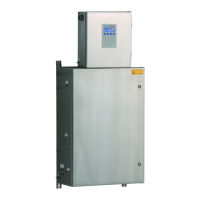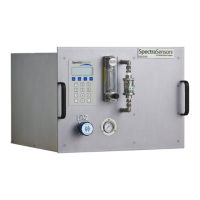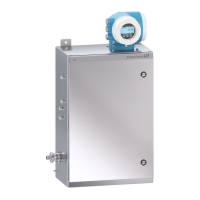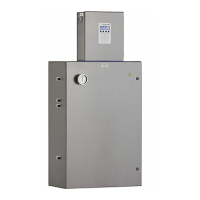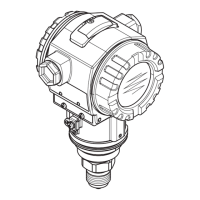SS500/SS2000 Analyzer
B–2 4900002285 rev. B 3-25-20
2. Turn off the sample valve at the tap in accordance with site lock-out,
tag-out rules.
3. Disconnect the gas sampling line from the supply port of the
analyzer.
4. Wash the sampling line with alcohol or acetone and blow dry with
mild pressure from a dry air or nitrogen source.
5. Once the sampling line is completely free of solvent, reconnect the
gas sampling line to the supply port of the analyzer.
6. Check all connections for gas leaks. SpectraSensors recommends
using a liquid leak detector.
Excessive Sampling Gas Temperatures and
Pressures
The embedded software is designed to produce accurate measurements only
within the allowable cell operating range (see Appendix A). Pressures and
temperatures outside these ranges will trigger a P/T Fail Error fault. Refer to
the Firmware Manual for this analyzer for instruction on system faults.
Electrical Noise
High levels of electrical noise can interfere with laser operation and cause it to
become unstable. Always connect the analyzer to a properly grounded power
source. Refer to “Protective chassis and ground connections” on page
3-4.
Powering Down the Analyzer
It may be necessary to power down the analyzer for problem solving or
maintenance reasons. An approved switch or circuit breaker rated for 15 amps
should have been installed and clearly marked as the disconnecting device for
the analyzer.
Topowerdowntheanalyzer
1. Switch off the power to the analyzer using the switch or circuit
breaker designated as the disconnection device for the equipment.
2. If the analyzer is going to be shut down for a short period of time for
routine maintenance, isolate the analyzer from the SCS. Refer to
“To isolate the analyzer for short-term shutdown (full-
featured sample system)” on page 4-9.
If the pressure, temperature, or any other readings on the LCD
appear suspect, they should be checked against the specifications
(see Appendix A).
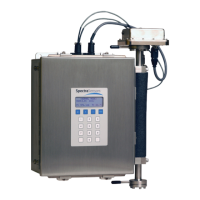
